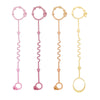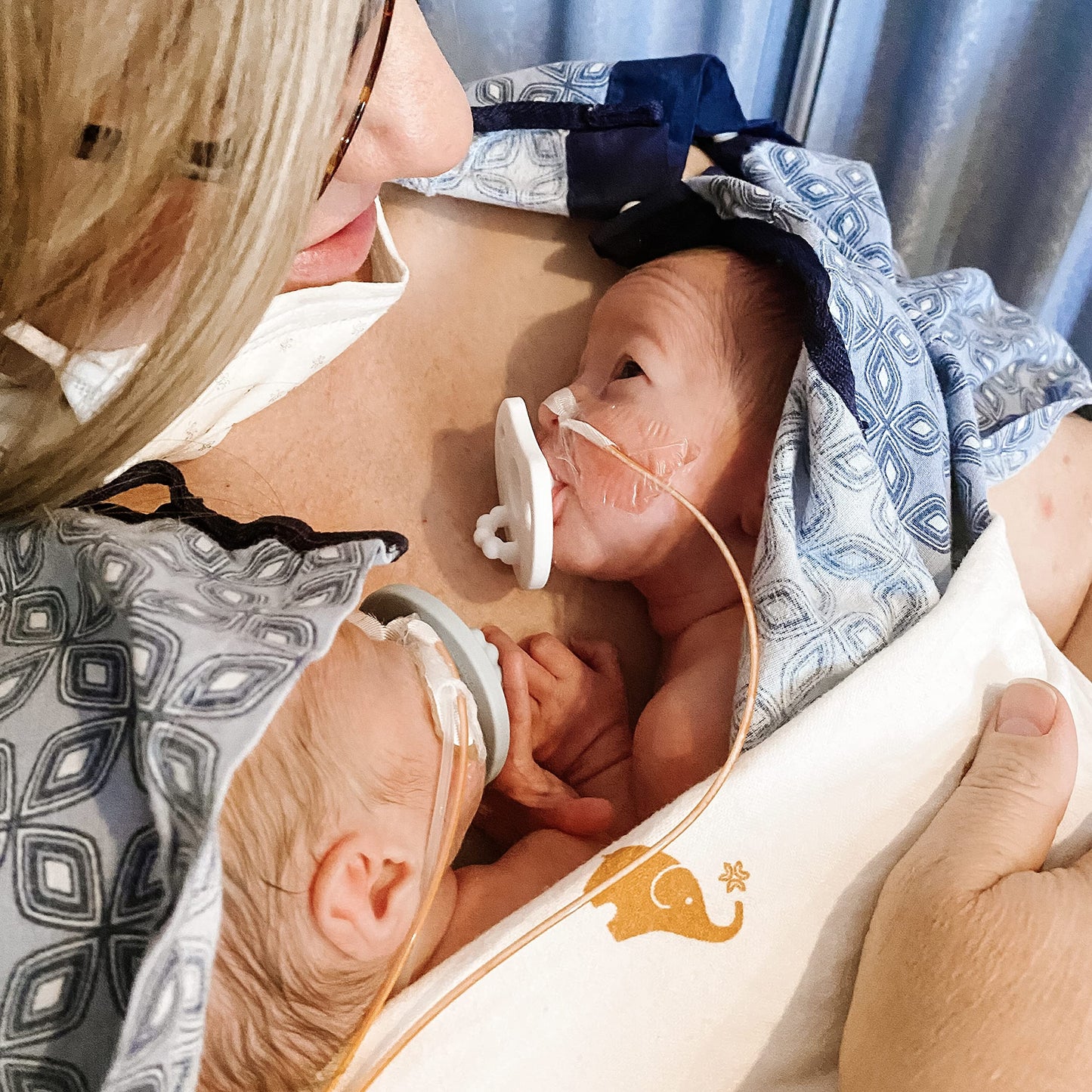You will not be allowed to compare more than 4 products at a time
View compareFrequently Asked Questions
- Q: What is included in the Ryan & Rose Cutie PAT Preemie Kit? A: The Preemie Kit includes two pacifiers: the Cutie Preemie Tiny for babies up to 35 weeks and the Cutie Preemie Stage 1 for babies over 35 weeks.
- Q: What is the difference between the Cutie Preemie Tiny and the Cutie Preemie Stage 1? A: The Cutie Preemie Tiny is designed for babies up to 35 weeks, while the Cutie Preemie Stage 1 is intended for babies over 35 weeks and has a standard Stage 1 nipple.
- Q: Are the pacifiers safe for newborns? A: Yes, the Cutie Preemie Stage 1 pacifier is safe for newborns and babies without teeth.
- Q: What material are the pacifiers made from? A: The Ryan & Rose Cutie PAT pacifiers are made from high-quality silicone.
- Q: How do the notched shields benefit preemie babies? A: The notched shields allow for breathing, CPAP tubes, ET tubes, and tube feeding, providing added comfort and functionality for preemie babies.
- Q: What should I do if my baby shows bottle-feeding cues before 35 weeks? A: If your baby shows bottle-feeding cues before 35 weeks, it is recommended to transition to the Cutie Preemie Round Stage 1 Nipple early.
- Q: When should I transition my baby to the Cutie PAT Round Stage 1? A: It is recommended to transition to the Cutie PAT Round Stage 1 around 40 weeks, but always consult your baby's healthcare professional for guidance.
- Q: Is the Cutie Preemie suitable for use in the NICU? A: Yes, the Cutie Preemie pacifiers are designed to help make life in the NICU easier for both parents and babies.
- Q: How do the lightweight design and small beaded feature help? A: The lightweight design and small beaded feature ensure that the Cutie Preemie pacifiers are easy for babies to use and comfortable to hold.
- Q: Can the Cutie PAT pacifiers be used for babies with special needs? A: The Cutie PAT pacifiers are designed with features that can assist various feeding needs, including for babies with special needs, but consult with your baby's healthcare professional for specific recommendations.












